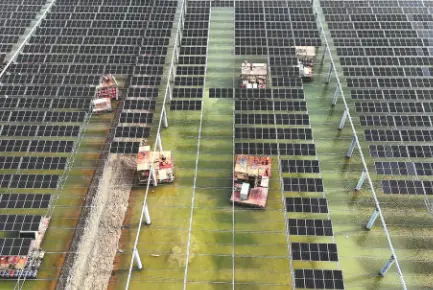In the city of Yichang in central China’s Hubei Province, 500 artificially-bred sturgeons were released into the Yangtze River on Saturday.
These are as ancient as dinosaurs, and have existed for more than 140 million years.
Nearly 1,000 people from various organizations came to offer a hand in setting these creatures free.
“I will tell people around me that we shouldn’t fish for Chinese sturgeons and that we should protect them,”
said Yang Shang Hongyang, an elementary school student, volunteered to help with the release
Chinese sturgeons are one of the oldest fish in the world.
Wild Chinese sturgeons are nearly extinct since many of their spawning grounds have been blocked by dams and water projects in China. It’s a species that is more endangered than the panda.
Since the 1980s, China has been making efforts to save endangered fish, as hundreds of captive-bred sturgeons are being released to the Yangtze River every year.
Young students come to offer a hand for the release.
The released sturgeons are aged between several months and nine-years-old. The largest one is over one meter long and weighs a whopping 23 kilograms. They're supposed to swim along the Yangtze River to the ocean and grow to sexual maturity. It often takes around 10 years for them to mature. Once grown, they migrate back to the rivers to lay their eggs around the Gezhou Dam.
The dam was built in the 1980s, but unfortunately blocked the sturgeons from laying their eggs further upstream in the Yangtze River.
Add to that the effects of overfishing and pollution, it's no surprise the sturgeon's numbers have plunged from over 10,000 in the 1970s to just a few dozen in recent years.
Experts say some Chinese sturgeons can grow to as long as five meters.
In an effort to save the species, scientists at the Chinese Sturgeon Research Institute in Yichang have made major technological breakthroughs in artificial breeding and reproduction.
Professor Yang Yuanjin, deputy director of the Chinese Sturgeon Research Institute, said, “the biggest difficulty for us is how to breed the sturgeons in fresh water given that the species actually grows in sea water. And the artificial reproduction is also difficult. But after decades of efforts, we’ve tackled all these difficulties.”
Eggs of Chinese sturgeons are seen becoming fish babies.
Since the 1980s, more than five million captive-bred sturgeons have been released to the Yangtze River. But experts say only dozens of them are now living in the wild.
“Artificial reproduction is only a supplementary means to maintain the species. In fact, wild Chinese sturgeons are still on the brink of extinction,” Yang revealed.
The released sturgeon getting used to the wild environment
The released sturgeons will be tracked by sonar devices implanted in their bodies. Hopes are that they will have a better life in the wild, and will breed to bring their numbers back to a safe level.
(CGTN)
 简体中文
简体中文










